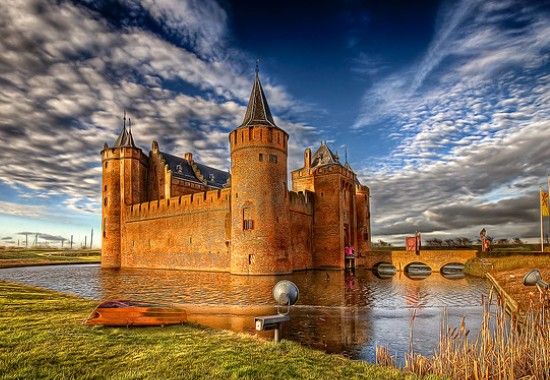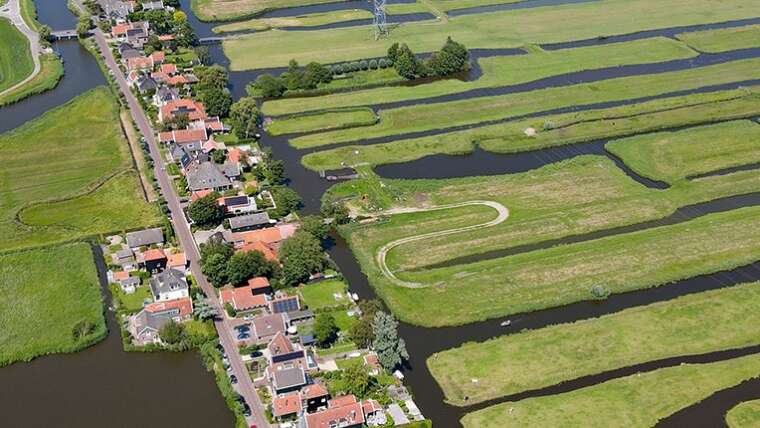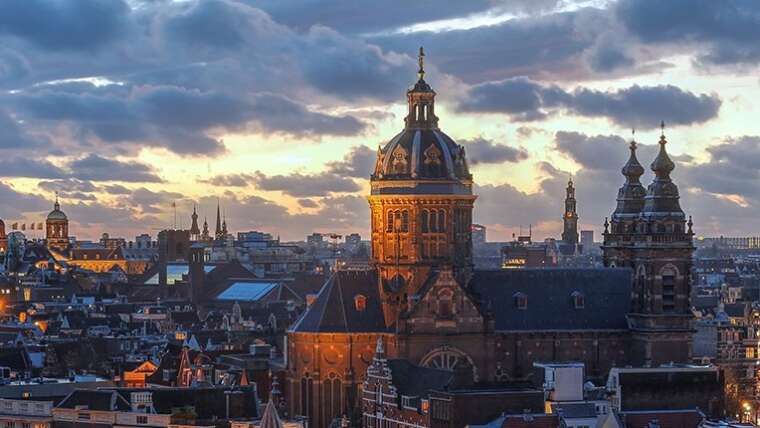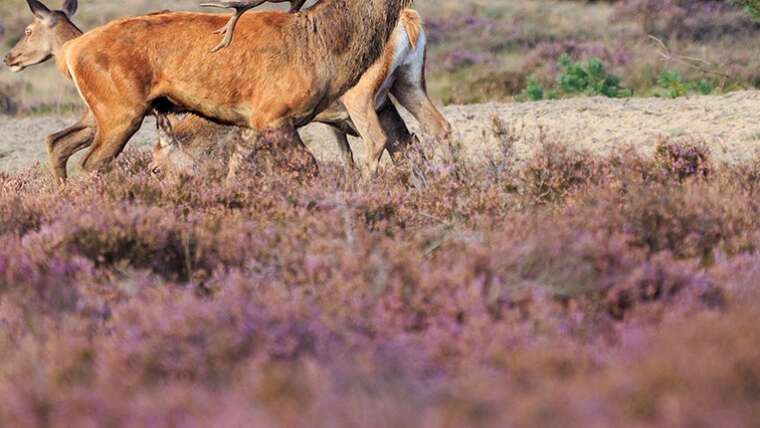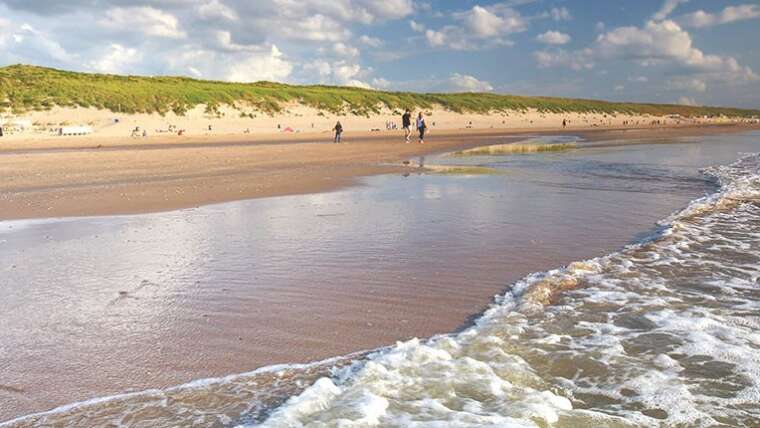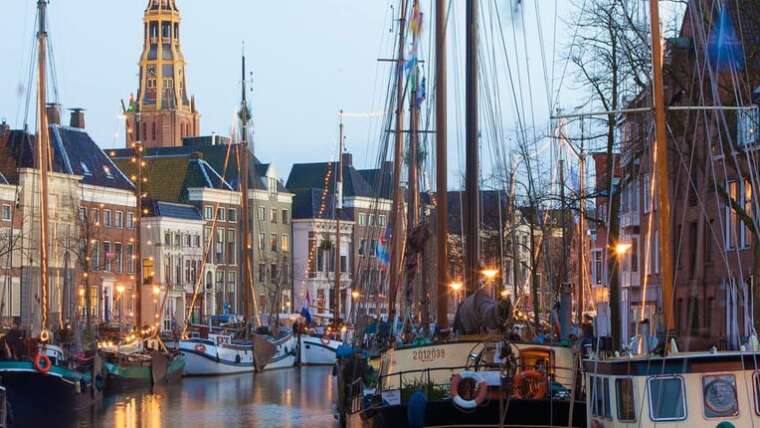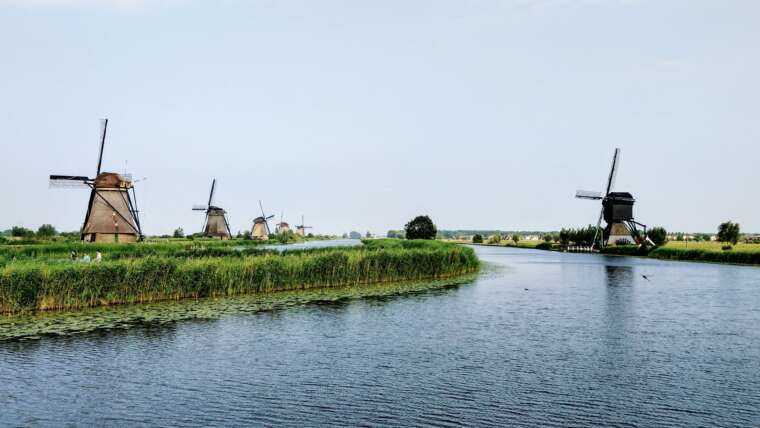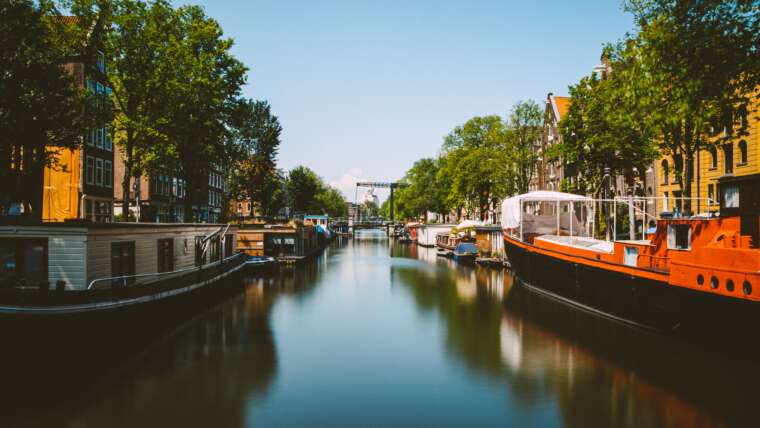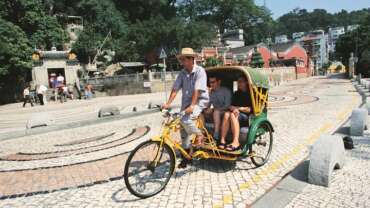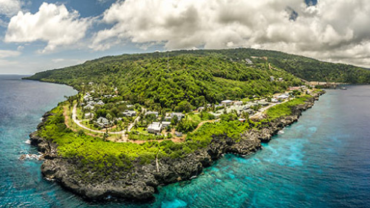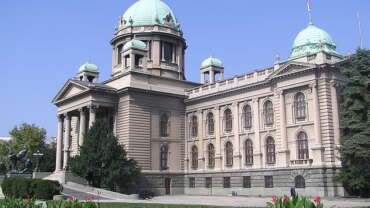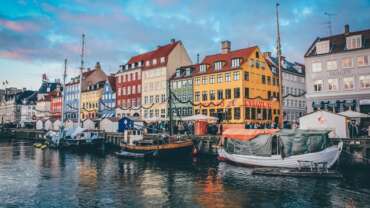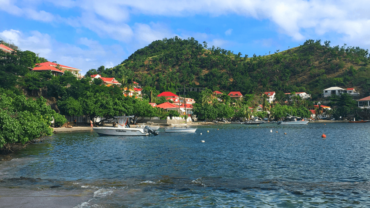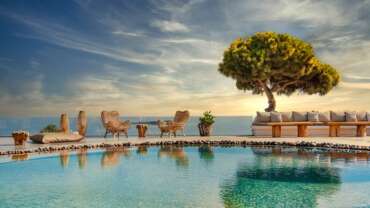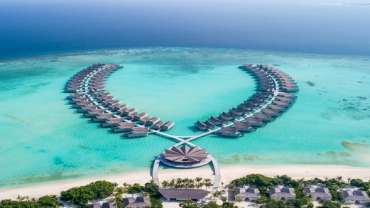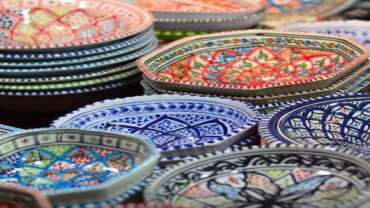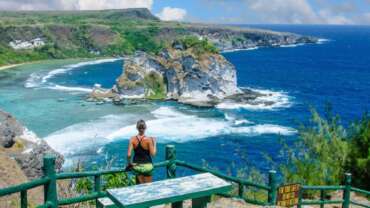Netherlands - The Original Cool
The Netherlands, a country in northwestern Europe, is known for a flat landscape of canals, tulip fields, windmills and cycling routes. Amsterdam, the capital, is home to the Rijksmuseum, Van Gogh Museum and the house where Jewish diarist Anne Frank hid during WWII. Canal-side mansions and a trove of works from artists including Rembrandt and Vermeer remain from the city’s 17th-century “Golden Age.”
If you think of the Netherlands, flowers, windmills and wooden shoes come to mind – but Holland has so much more to offer! Enjoy the bracing wind with a beach walk along the Dutch coast or a cycling tour of the Veluwe. Experience the welcoming hospitality of North Brabant and Limburg, the authentic charm of our Hanseatic cities and the Achterhoek in eastern Holland, and the freedom of the provinces of Friesland and Groningen with their wide horizons. Discover how the Dutch battle against the water in Flevoland, our newest province, and immerse yourself in Dutch culture in the modern metropolises, historic cities, and picturesque villages in the west of the Netherlands.
And best of all, you do not have to choose because all this and much more is within a two hour travel distance.
History of Netherlands
The Union of Utrecht
On January 23, 1579, the agreement at Utrecht was concluded, forming a “closer union” within the larger union of the Low Countries led by the States General sitting in Brussels. Included in the Union of Utrecht were the provinces and cities committed to carrying on resistance to Spanish rule: Holland, Zeeland, Utrecht, Gelderland (Guelders), and Zutphen (a part of Overijssel) as the first signatories, followed in the next year by the whole of Overijssel, most of Friesland, and Groningen, all in the north, and in the south by the cities of Antwerp and Breda in Brabant and Ghent, Brugge (Bruges), and Ypres (Ieper) in Flanders. Designed to establish a league for conduct of the war of independence and ultimately to strengthen the central government in Brussels, the Union of Utrecht became in fact the foundation of a separate state and a distinct country in the northern Netherlands. The new state was named the United Provinces of the Netherlands, or, more briefly, the Dutch Republic, and its government was known in the international community as the States General.
The people of the northern Netherlands began to be distinguished from the inhabitants of the south (to whom the name Flemings continued to cling) by the appellation Hollanders (French: Hollandais; Italian: Olandese; German: Holländer; and so forth), after their principal province. The English, however, came to apply exclusively to the Hollanders the term Dutch, which previously they had applied to all German speakers (from German Deutsch, Dutch Duits). The name Netherlanders, which remained in use in the Low Countries for the inhabitants of the United Provinces specifically and for all those, north or south, who spoke Dutch (Netherlandic), passed out of currency in most foreign countries or came to be restricted to the northerners. The transformation had a price: the erosion of the bond of historical identity between northerners and southerners—or Dutch and Belgians, as they would be called beginning in the 19th century.
The treaty that formed the basis of the new northern union established a military league to resist the Spaniards on a “perpetual” basis, and it provided for closer political arrangements between the provinces than those of “allies” in the ordinary sense. The provinces united “for all time as if they were a single province”; each remained sovereign in its internal affairs, but all acted as a body in foreign policy. Decisions on war and peace and on federal taxation could be made only unanimously. The union did not throw off the formal sovereignty of the king of Spain, but it confirmed the effective powers of the provincial stadtholders (formally the “lieutenants,” or governors, of the king) as their political leaders (there was no “stadtholder of the United Provinces,” as foreigners often assumed, although several of the provincial stadtholderates were often united in the same person). The union moved away from the religious settlement embodied in the Pacification of Ghent of two years before and toward a predominance of the Calvinists and their monopoly of public practice of religion in the key provinces of Holland and Zeeland.
The immediate political significance of the union was that it complemented the Union of Arras, concluded earlier in January, which began the reconciliation of the southerners with King Philip II of Spain. The two “unions,” parallel but opposite, thus undermined the policy of William I (Prince William of Orange) of collaboration between Roman Catholics and Calvinists throughout the Low Countries in resistance to the Spanish domination, which required mutual toleration between the religions. But it took some time before the “general union,” with its base in the States General at Brussels, fell apart irrevocably.
For another half decade the prince struggled to keep intact the broader union and at the same time to ensure its military and political support from abroad. Although Archduke Matthias of Habsburg, named governor-general by the States General in 1577 after the deposition of Don Juan, remained the formal head of state until 1581, the prince continued to exercise his leadership. That the prince was the head and heart of the rebellion was recognized by Philip II in 1580, when he put him under the ban of outlawry. William’s Apology in defense of his conduct was followed in 1581 by the Act of Abjuration (Akte van Afzwering), by which the States General declared that Philip had forfeited his sovereignty over the provinces by his persistent tyranny. This was a declaration of independence for the whole of the Low Countries, but the military and political events of the next decade limited its permanent effect to the northern provinces under the “closer union” of Utrecht.
Foreign intervention – Yet independence did not become William’s objective even after the proclamation of the Act of Abjuration. Archduke Matthias returned home in 1581 after William turned to François, duke of Anjou, who agreed to take over the “lordship” of the Low Countries in 1580. The prince hoped for assistance from the duke’s brother, King Henry III of France, and considered the lordship of Anjou as only a kind of limited, constitutional sovereignty like that which the rebels had hoped to impose on Philip II at the beginning of their rising. Anjou, however, saw the lordship as a means to total dominion over the Netherlands. Irritated by restraints upon his authority, he even attempted the seizure of power by military force, which resulted in the so-called French Fury of January 17, 1583, when his troops tried to capture Antwerp. The coup misfired, but William managed to keep Anjou (who returned to France) in his post despite the outraged feelings of the Netherlanders.
Holland and Zeeland were on the verge of offering the title of count to William when he was assassinated on July 10, 1584, at Delft, by Balthasar Gérard, a fanatical young Roman Catholic from Franche-Comté, spurred by the promises of the ban of Philip II. William’s death did not end the rebellion, as Philip had hoped, but it did result in the almost unnoticed disappearance of the central government in Brussels. The States General, which now met at The Hague in Holland, represented only the provinces in the Union of Utrecht.
With the Spaniards steadily overrunning Flanders and Brabant, the Dutch in their plight did not immediately abandon William’s policy of seeking foreign assistance. But after Henry III of France and Elizabeth I of England both refused sovereignty over the country, the States General in 1586 named as governor-general Robert Dudley, earl of Leicester, whom Elizabeth had sent to command Dutch and English auxiliary forces against the Spaniards after the fall of Antwerp. Leicester, like Anjou before him, endeavoured to make himself absolute master of the country, relying on the support of popular Calvinism and of the outlying provinces that were jealous of Holland to create a strong centralized government under his authority. Holland thwarted Leicester’s efforts, which culminated in an attempted invasion of Holland from Utrecht in 1587. With Leicester’s departure, the United Provinces put aside all efforts to obtain a foreign protectorate and stood forth as an independent state.
The formation of a new government
Although derived from historical institutions, the government of the United Provinces was in practice largely a new set of institutions, not created but confirmed by the Union of Utrecht. Their primary force lay in the provinces, seven in number (Holland, Zeeland, Utrecht, Gelderland, Overijssel, Friesland, and Groningen), which were ruled by assemblies of provincial States representing the towns and the landed nobility. Although the stadtholders (who after a few years came to be drawn exclusively from the house of Orange) were elected by the States of the provinces, they at the same time possessed important prerogatives in the selection of members of the town governments from which the provincial assemblies ultimately derived their authority, and they were the acknowledged military leaders of the republic. Central government passed from the Council of State to the States General, which was more explicitly subordinated to provincial authority. Although it conducted the military and diplomatic work of the republic, the States General failed to obtain effective rights of direct taxation (except for import and export duties assigned to the admiralties), and its major decisions were taken under the rule of unanimity.
In practice the province of Holland, by far the wealthiest province in the union and the contributor of more than half the revenues of the central government, became the preponderant political force in the country, along with the stadtholders of the house of Orange. The relationship between Holland and the house of Orange governed the republic’s politics for the two centuries of its existence. As collaborators, Holland and the princes of Orange could make the clumsy governmental system work with surprising effectiveness; as rivals, they imperiled its potency as a state, at least until one or the other emerged a temporary victor, but neither force was able to rule permanently without the other.
The decades immediately after 1587 were marked by close collaboration between Johan van Oldenbarnevelt, “advocate” of Holland (the legal and executive secretary of the provincial States), and Maurice of Nassau, William I’s second son (the first, Philip William, became prince of Orange and remained loyal to Spain), who was named stadtholder of Holland and Zeeland and became the commander of the republic’s armies. The result was a series of military triumphs over the Spanish forces under Alessandro Farnese, duke di Parma e Piacenza. Maurice recaptured the Dutch territories north of the great rivers and extended them southward into much of Brabant and enough of Flanders to cut off Antwerp from the sea. These victories are recorded in the historical memory of the Dutch as “the closing of the garden,” the territory that became the republic of the United Provinces and then (with a few additions) the modern Kingdom of the Netherlands. These victories were accompanied by England’s and France’s diplomatic recognition of the States General as the government of an independent state.
People of Netherlands
Ethnic groups
Popular belief holds that the Dutch are a mixture of Frisians, Saxons, and Franks. In fact, research has made plausible the contention that the autochthonous inhabitants of the region were a mixture of pre-Germanic and Germanic population groups who in the course of time had converged on the main deltaic region of western Europe. There emerged from these groups in the 7th and 8th centuries some major polities based on certain ethnic and cultural unities that then came to be identified as Frisians, Saxons, and Franks.
The Dutch Republic originated from medieval statelets, and its legal successor, the Kingdom of the Netherlands, has attracted countless immigrants through the centuries. A strong impetus was the principle of freedom of thought, which engendered the relative tolerance that developed in the 16th and 17th centuries. These sentiments were—and are—most manifest in the prosperous commercial and industrial centres in the western provinces, which attracted many members of persecuted religious or political minorities. Among these were southern lowlanders, French Huguenots, and Portuguese Jews, along with many people who sought to improve their economic situation, such as Germans and non-Iberian Jews. In the 20th century, immigrants from the former Dutch overseas colonies added to the influx; they included Indonesians and peoples from the Moluccas and from Suriname on the northeast coast of South America. In recent decades, however, as Muslims from Turkey and Morocco arrived in large numbers, Dutch embracement of diversity has been more tenuous. At the beginning of the 21st century, not only did a virulent anti-immigrant movement emerge, but also the government required that immigrants pass a test in their country of origin relating to Dutch language and culture before they were allowed to enter the Netherlands.
Languages
The language in the whole of the country is Dutch, sometimes referred to as Netherlandic, a Germanic language that is also spoken by the inhabitants of northern Belgium (where it is called Flemish). Afrikaans, an official language of South Africa, is a variant of the Dutch spoken by 17th-century emigrants from the Holland and Zeeland regions. Apart from Dutch, the inhabitants of the northern province of Friesland also speak their own language (called Frisian in English), which is closer to English than to either Dutch or German. In the major cities especially, many people are fluent in several languages, reflecting the country’s geographic position, its history of occupation, and its attraction for tourists. English, French, and German are among the languages commonly heard.
Facts about Netherlands
The Dutch
Internationally, the Dutch are known to be rather direct in their approach. We simply call that honesty and openness. We like to complain, especially about the weather, but we also find creative and innovative solutions for everything. Some 17.5 million people live in an area of 41,5000 square kilometres in the Netherlands. Is that a lot? Yes, the Netherlands is not only the most densely populated country in the EU, but one of the most densely populated countries in the world. Over 40% live in the ‘Randstad’, the area between Amsterdam, Rotterdam, The Hague and Utrecht.
Speaking a few words Dutch
Dutch is the official language in the Netherlands. You will of course make a good impression on your holiday if you can already speak a few words. It most closely resembles German. A second Dutch language is also spoken in the province of Friesland: Frisian. Besides this officially recognised regional language, there are also dialects and other regional languages. No talent for language? No problem, because most Dutch people speak English and often a bit of German or French as well.
The Dutch Flag
The Dutch flag is a horizontal tricolour of red, white and blue. On King’s Day and Liberation Day, it looks as if everyone in the Netherlands has put up their flags. Many Dutch people also raise a flag when their child has passed their final exams, with a school bag on the mast. And when the king is at home, the flag flies above his palace. It is customary to lower the flag at sunset. On Remembrance Day, all the flags hang at half-mast.
The Royal Family
Since 1815, the Netherlands has been a kingdom, officially called the Kingdom of the Netherlands. King Willem-Alexander has been the Dutch Head of State since 2013. His wife, Queen Maxima, is present on many official occasions and she also has her own duties. The royal family is loved by many Dutch people. The King’s birthday is celebrated throughout the country on 27 April. It is a real Orange celebration!
Pastures & Cloudy Skies
A favourite topic of conversation for the Dutch is the weather. There are all kinds of words for ‘rain’, from miezer (drizzle) to pijpenstelen (pipe stems, cats and dogs). In summer, it can be warm and in winter it can snow and freeze. The changing weather also creates beautiful landscapes, such as the fresh green pastures with grazing cows and some impressive clouds in the sky. That’s the Netherlands! But you can also discover hills and dunes, wetlands and high moorlands, ancient forests and even mountains in our country.
Dutch and the Water
The Netherlands has a strong connection with water. It has over 450 kilometres of coastline bordering the North Sea. 26% of the Netherlands lies below sea level. Three major rivers cross the country: the Rhine, the Meuse and the Scheldt. No less than 4,400 km of navigable rivers, canals and lakes. It’s a miracle we still have dry feet here. And that has not always been the case! For centuries, the Netherlands has been battling with water: with dikes, waterworks and reclamation projects.
Caribbean Netherlands
The Dutch Caribbean refers to three ‘special municipalities’ of the Netherlands: the islands of Bonaire, St. Eustatius and Saba, which are located in the Caribbean Sea. In the overseas Caribbean, there are three more islands that belong separately to the Kingdom of the Netherlands: Aruba, Curaçao and Sint Maarten. Until 2010, all the islands together formed the Netherlands Antilles, a country within the Kingdom of the Netherlands.
Discover the Netherlands now
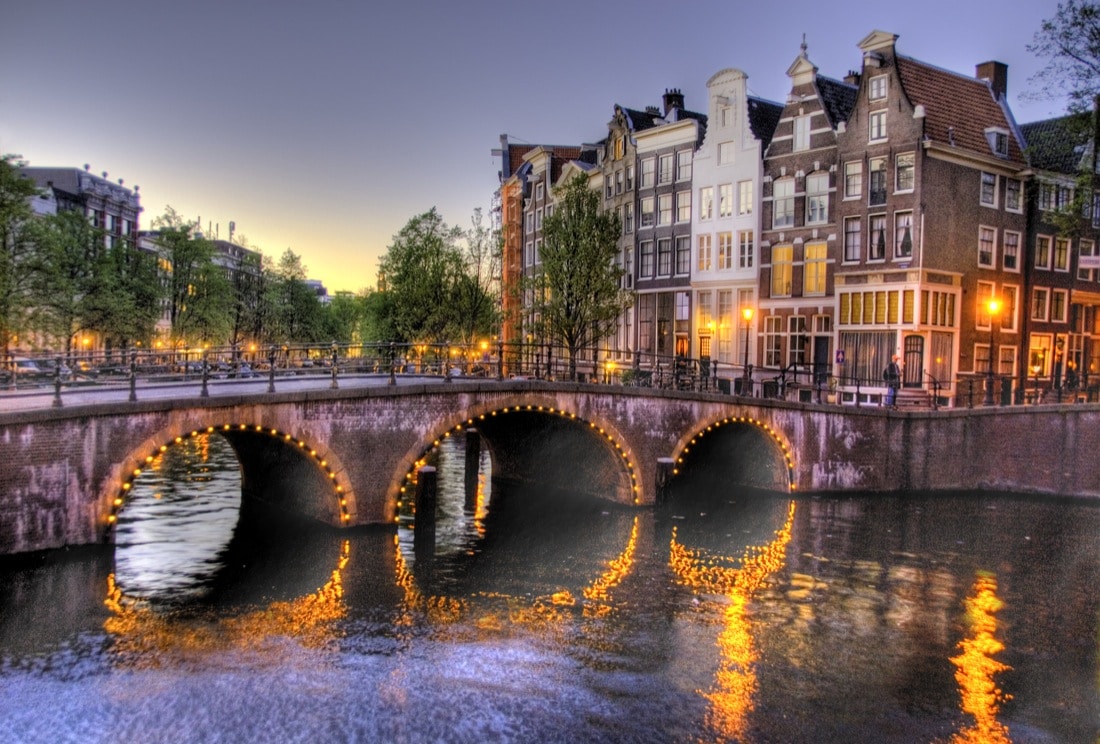
Cycling is one of the greatest ways to discover Holland. Read all about the best routes and cycling holidays here. Holland is home to many great restaurants, excellent chefs and regional produce of high, internationally recognised quality. Taste and discover the pure, delicious and honest cuisine of Holland. Discover the Dutch coast with 250 km worth of beaches, dunes, and the greatest seaside towns. Check out the regions bordering the North Sea and book a great holiday on the coast. Discover Dutch art and culture. From old masters to modern architecture, Holland has a lot to offer. Did you know that no less than 26 per cent of Holland lies below sea level? See and experience how Holland manages and enjoys its water in a variety of places.
Shopping in Holland? The big cities have the best shops, department stores and shopping centres for fashion, art and design.



